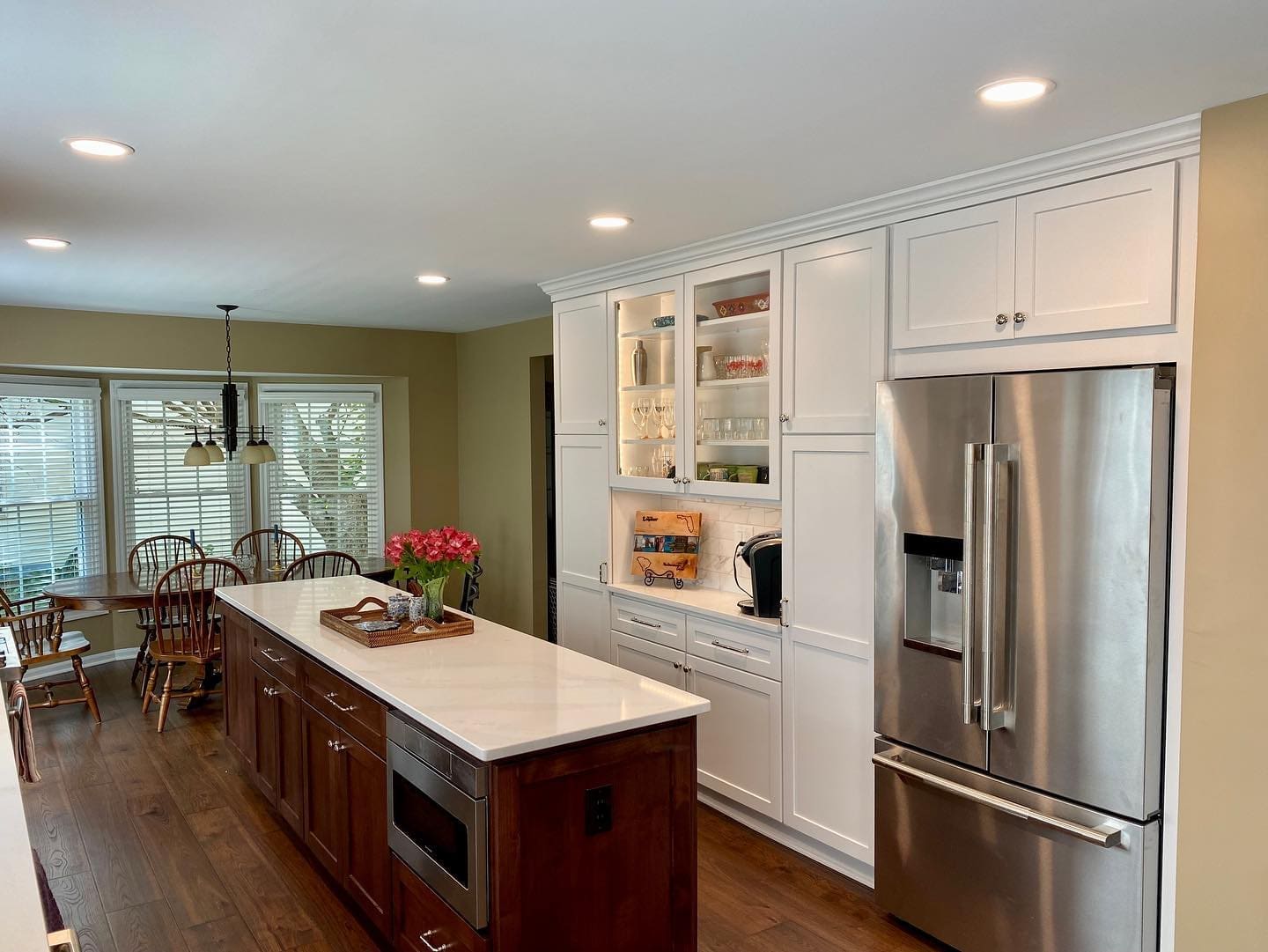 These two components of a kitchen’s make-up are often overlooked by homeowners in their journey toward assembling the perfect kitchen space. So much attention is drawn toward the cabinetry, countertops and flooring that the countertop’s edging and backsplash areas become secondary to configuring the functionality and beauty of the kitchen. These are key areas, however, that can really tie a theme together as well as providing a functional service feature to the area when addressed with intention and purpose. Regardless of the material that is decided upon for the countertop surface, the countertop edging and abutting backsplash area are details that lend themselves toward customization and personalization of your new kitchen.
These two components of a kitchen’s make-up are often overlooked by homeowners in their journey toward assembling the perfect kitchen space. So much attention is drawn toward the cabinetry, countertops and flooring that the countertop’s edging and backsplash areas become secondary to configuring the functionality and beauty of the kitchen. These are key areas, however, that can really tie a theme together as well as providing a functional service feature to the area when addressed with intention and purpose. Regardless of the material that is decided upon for the countertop surface, the countertop edging and abutting backsplash area are details that lend themselves toward customization and personalization of your new kitchen.
Countertop Edgings of Style and Function
In an active household, kitchen, the focus of a countertop edging is primarily devoted toward providing an edging that acts as a ‘bumper’ to the, alleged, vulnerable countertop surface; and in some cases, this may be the right way to approach it. Homeowners with laminate or tile countertops know that the edges of these types of surfaces are prone to unwanted chipping if the defenseless edges of these materials are not protected. Common methods of adding protective value to these surfaces may be the inclusion of metal countertop edgings or finishing the edges in hardwood that matches the cabinetry. With laminate and tile surfaces, there also exists the option of finishing the edge in laminate or tile, respectively; but the problem here is that, at some point, a ‘raw’ exposed edge of the material will still exist and, therefore, be susceptible to damage. Stone, quartz and solid surface countertops will typically have a decorative edge ‘turned’ (router) on them as a finish edge as these materials are much harder and more resilient to impact related damage. Concrete countertops, like laminate and tile, tend to be vulnerable at the edges; but the protective feature (metals, stone aggregate, etc.) will likely be embedded into the edge of the slab and not attached, per say, rendering a finished edge that is both stylish and practical.
Although the vertical profile of the counter’s edge may only range from 3/4” to 1 1/2”, a lot can be done to dress-up this line and give some needed distinction from the cabinetry and the countertop. In many stone, quartz and solid surface installations, for example, an additional strip of countertop material is glued to the underside of the counter, at the counter’s edge. This gives the illusion that the counter is double the thickness of that which it actually is. This practice lends itself to a more daring step in aesthetics by simply using an alternate color or style of the product and having that color be used to frame the counter’s edge. Once glued, these feature strips can be turned and polished as if they were a part of the countertop itself. With solid surface, narrow hardwood strips (matching the cabinets) can be sandwiched between the top and an additional strip beneath, rendering a clean and classy edge that will stand up to abuse. Concrete countertops have unlimited methods of detailing the edging, while laminate and tile tend to be restricted to the parameters of their own product line or metal and wood edging. When utilizing metal edging, in any countertop installation, be sure to pay attention to the other metals in the kitchen (sinks, faucets, cabinet hardware, lighting, appliances, etc.) so you don’t, inadvertently, ‘clash’ or have a metallic conflict.
The Backsplash as an Artist’s Canvas
A great way to approach a backsplash area is to look at it as your own canvas, and you are the artist. A backsplash can be a long, contiguous ‘horizon’ or it can be abbreviated ‘frames’ and, of course, a combination of both. While some kitchen designs (particularly contemporary) call for a single, monolithic theme on the backsplash, most other styles allow for these areas to be addressed as unique and defined spaces that can be addressed individually and differently in the same general kitchen space. This flexibility allows the homeowner or designer to ‘play’ with textures and colors, have a bit of fun, adding interest and character while extending and expressing the distinctive personality of the artist in charge!
Most applications dictate that backsplashes be of a material or finish that is highly serviceable as these surfaces receive the brunt of culinary mishaps. With this in mind, and being the ‘artist in charge’, just think about the ‘medium’ of which you intend to exercise your craft and creativity. Whether you choose paint, tile, glass, or wood, all you need to do is bear in mind that your selections in such mediums will have to service you well–then have fun! For those who are choosing to insert stone, quartz, solid surface, or concrete onto the backsplash area to coordinate or continue your countertop surface, have a plan in mind as to how you can splash things up a bit in order to avoid the mundane. Then again, this sort of clarity may just well be the type of picture you want on your canvas!





